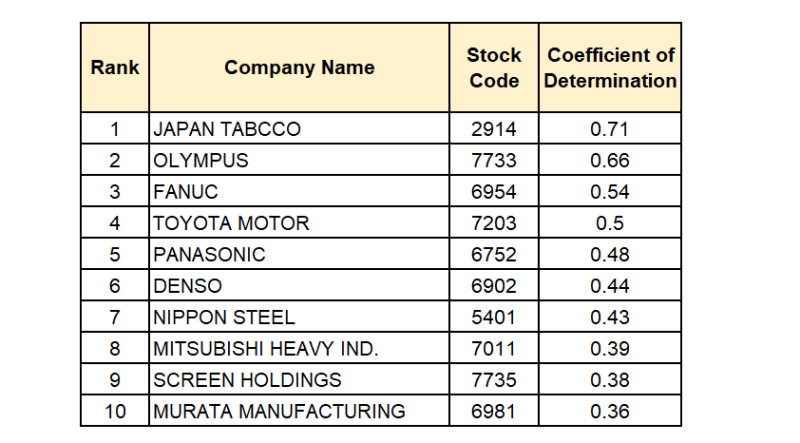Japan Markets ViewChecking Relationship Between Corporate Trends and Human Flow Data
Sep 22, 2021

In the world of asset management, there is an accelerating trend toward the use of non-traditional “alternative data” in addition to traditional investment information such as earnings results and statistics. QUICK has begun selling “KDDI Location Data (location-specific movement data)” provided by KDDI (9443) through its data platform “QUICK Data Factory.” Based on GPS location data, this service aggregates the movement of people at each location of the 50 major companies. A study of the relationship between corporate trends and human flow data, which shows the movement of people, revealed the possibility of deciphering corporate earnings results from KDDI human flow data.
Since KDDI Location Data is aggregated mainly from manufacturing factories, we analyzed whether it is possible to estimate production volume from human flows. Figure 1 is a graph of human flows in 2020 for Toyota Motor (7203) and Honda Motor (7267).
<Figure 1>

The second half of 2020 is when the global economy began to recover from the downturn caused by the COVID-19 pandemic. Compared to Toyota, which saw an increase in human flow as global demand for automobiles recovered, Honda’s recovery was slower. It was around this time that Honda, Nissan Motor and other companies began to report production cuts due to semiconductor shortages. On the other hand, Toyota, which withstood the semiconductor shortage by improving its supply chain, is believed to have been able to maintain its production volume. However, in addition to the prolonged shortage of semiconductors, the spread of COVID-19 variants in Southeast Asia and other regions has affected the production of local factories, and Toyota is repeatedly reducing production at present. By continuously checking the human flow data, it will be possible to quickly catch up with the production status of companies, which is becoming increasingly important.
Next, we analyzed the relationship between human flow and earnings results. Coefficients of determination, which indicate the strength of the relationship, were used in the analysis. For each company, we calculated the coefficient of determination between total human flow data and sales, and ranked them in order of high value (Table 1). Correlations above a certain level were found for four companies: Japan Tobacco, Olympus, Fanuc, and Toyota.
<Table 1>

*Human flow and sales were compared on a quarterly basis.
Furthermore, when the coefficients of determination were calculated for each plant, higher correlations (0.8 or higher) were found for Toyota’s Kinuura Plant and Takaoka Plant, and Shin-Etsu Chemical’s Naoetsu Plant and Gunma Complex Isobe Plant. By focusing on the human flow in factories close to the final process or in large factories, human flow data may become a leading indicator not only of a company’s production status but also of its quarterly earnings results.
KDDI Location Data on QUICK Data Factory
https://corporate.quick.co.jp/data-factory/en/product/data038/




